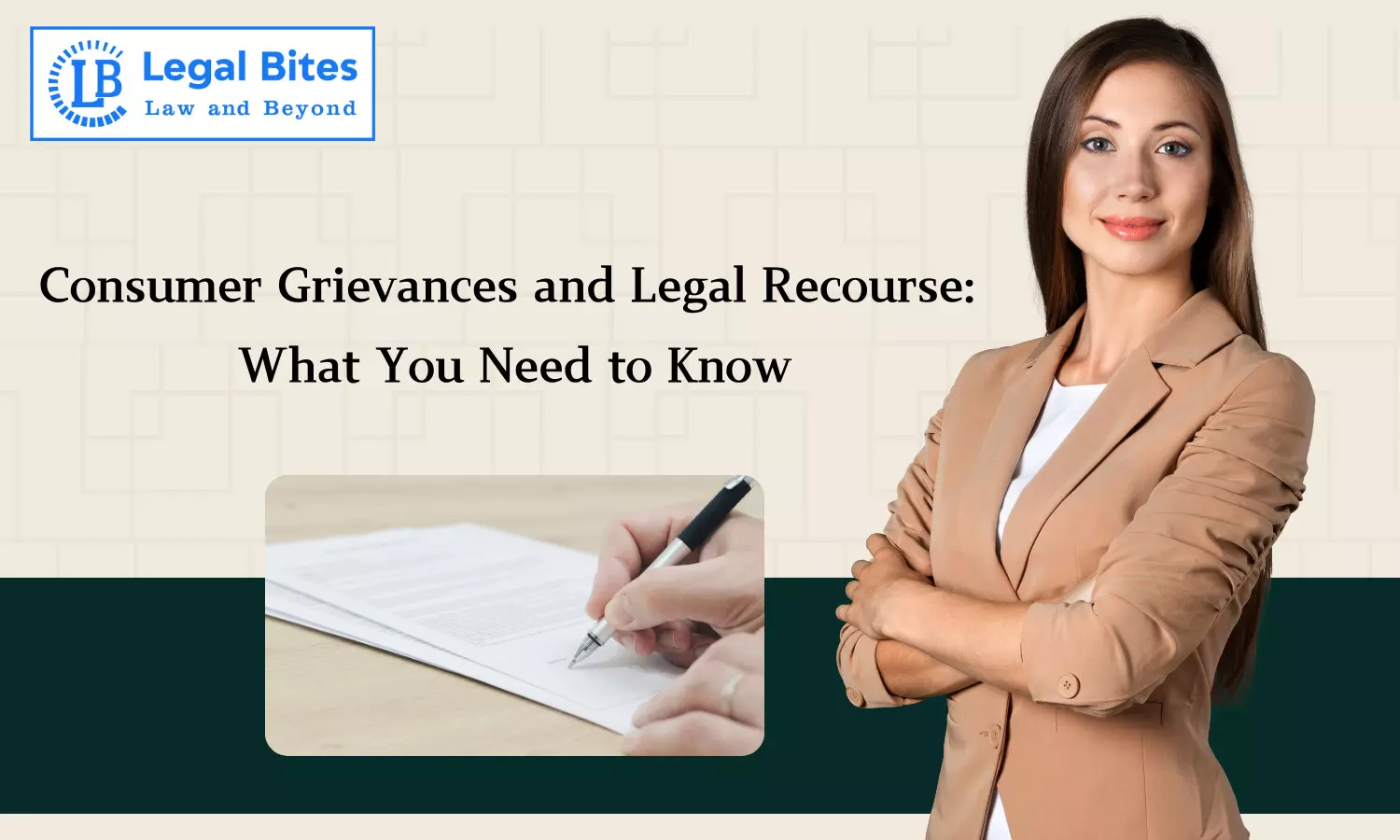Consumer Grievances and Legal Recourse: What You Need to Know
Understand your rights and explore legal recourse options to effectively address consumer grievances in today's marketplace

In an increasingly consumer-centric world, protecting your rights as a consumer is essential. Whether you've encountered defective products, poor services, or misleading advertisements, knowing how to address consumer grievances is crucial. A legal notice serves as the first step in seeking redress for such issues. This article explores the significance of legal notices, how to draft them effectively, and the consumer rights you can assert to resolve disputes.
What is a Consumer Grievance?
Consumer grievances refer to dissatisfaction arising from the purchase of goods or services. Common issues include:
- Defective products – Items that do not meet the promised standards or functionality.
- Inadequate services – Poor-quality services, delays, or failure to deliver as agreed.
- Misleading advertising – False or exaggerated claims about products or services.
- Overpricing – When consumers are charged more than the advertised price.
- Breach of warranty – Violations of the terms and conditions of warranties or guarantees.
A legal notice allows consumers to formally address these issues, serving as the first step toward resolution.
Importance of a Legal Notice in Consumer Grievances
A legal notice is a formal written communication sent to the offending party, such as a business or service provider, alerting them to the consumer's grievances. Here’s why it’s essential:
Clear communication – It outlines the specific problems and demands a remedy.
Pre-litigation resolution – This offers the other party an opportunity to resolve the matter before escalating to court.
Legal documentation – It serves as an official record in case further legal action is necessary.
Key Components of a Legal Notice
When drafting a legal notice, ensure the following elements are included:
- Consumer details – Full name, address, and contact information.
- Product or service details – Description, including purchase date, invoice, and relevant specifics.
- Grievance description – A detailed account of the issue(s) faced by the consumer.
- Legal basis – Cite relevant sections of the Consumer Protection Act, 2019 or any applicable laws.
- Demand for remedy – Clearly state the resolution sought, such as a refund, repair, or replacement.
- Deadline for response – Provide a reasonable period (usually 15-30 days) for the other party to respond.
- Warning of legal action – Mention that failure to respond within the set time will result in legal proceedings.
Your Rights as a Consumer
The Consumer Protection Act, 2019 grants consumers several rights, such as:
- Right to be informed – About the quality, price, and standards of goods or services.
- Right to choose – Products and services freely without coercion.
- Right to be heard – Ensuring that grievances are considered.
- Right to seek redressal – For unfair or unsatisfactory services and products.
- Right to consumer education – To be aware of your rights and responsibilities as a consumer.
If a consumer’s grievances are not addressed after the legal notice, the next step is to file a complaint in a Consumer Dispute Redressal Commission at the district, state, or national level based on the value of the claim.
Conclusion
Issuing a legal notice is a powerful way to assert your consumer rights and seek resolution for grievances. It serves as a formal, structured approach to resolving disputes without immediately resorting to litigation. Consumers who understand their rights are better equipped to stand against unfair practices and secure the redress they deserve.
By taking this proactive step, you ensure that businesses remain accountable and uphold the promises made to consumers, fostering a healthier, more trustworthy marketplace.

